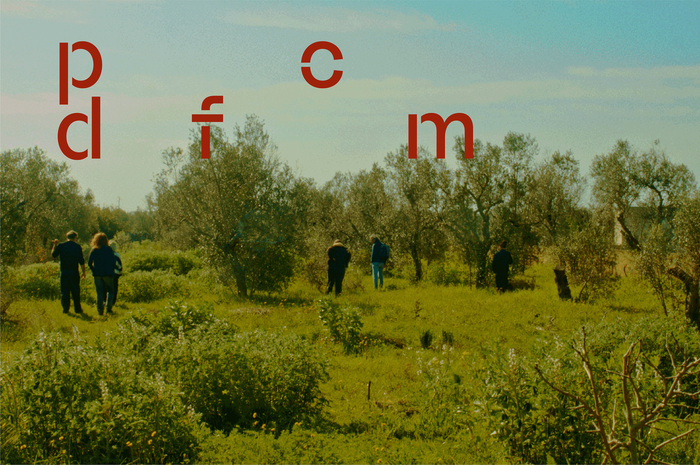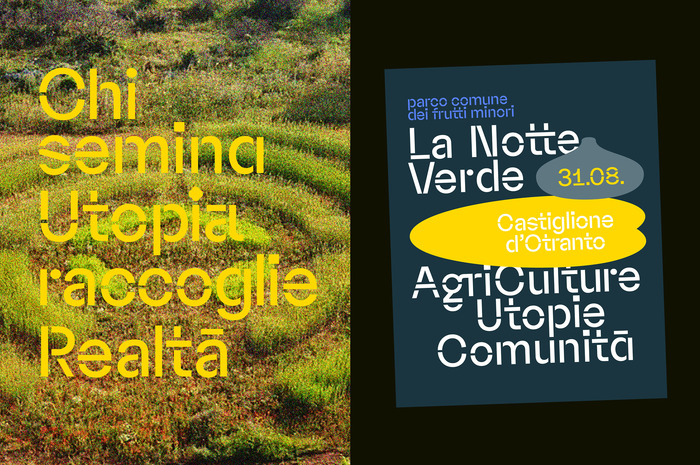Parco Comune dei Frutti Minori

Source: grupppo.com Grupppo. License: CC BY-SA.


Parco Comune dei Frutti Minori (English: “Common Orchard of Lesser Fruits”) is a decade-long project focused on regenerating public land, led by a local community of artists, thinkers, and radical farmers in Southern Italy. This community reclaimed abandoned areas and transformed them into public agricultural spaces, planting indigenous fruit trees and ancient crops. Today, the small village of Castiglione d’Otranto (Lecce) stands as a model for territorial development, blending rural traditions, organic agriculture, and social and political engagement.
Grupppo developed the visual identity for the park and its associated activities, guided by a key question: How can we represent the complexities of a community while creating a distinctive and cohesive visual system? Beginning with a workshop for art students visiting the Parco, the project focused on the custom redesign of a typeface, envisioned as a recognisable and democratic visual tool freely available to all.
The typeface, Parco Comune, is a modified version of Uncut Sans by Kasper Nordkvist, licensed under the SIL Open Font 1.1. This stencil-friendly font has been applied to signage, communication materials, and a flexible logo system designed for the project. For editorial purposes, such as the calendar featured here, the stencil typeface is paired with Minipax by Raphaël Ronot. The font has been distributed to the community and is widely used in various media, including posters and social media communications. It remains a work in progress, and contributions to its refinement are welcome. A beta version can be requested by contacting studio@grupppo.com.
The project was initiated by artist Luigi Coppola and is organised by Associazione Casa delle AgriCulture Tullia e Gino. Each year, the community gathers for the Notte Verde, an agricultural festival featuring talks, workshops, performances, and markets celebrating rural ecology. For this occasion, the village – home to only 1,000 residents – welcomes an impressive 30,000 visitors.

Source: grupppo.com Grupppo. License: CC BY-SA.

Source: grupppo.com Grupppo. License: CC BY-SA.

Source: grupppo.com Grupppo. License: CC BY-SA.

Source: grupppo.com Grupppo. License: CC BY-SA.
This post was originally published at Fonts In Use